Growing your own salad greens will put a world of fresh ingredients at your fingertips. Whether you are a gourmet salad lover who likes to experiment with interesting greens or someone who just wants to have your own homegrown lettuce, your choices are only limited by the seeds you can find and the space you have.
Types of Salad Greens
We always think of spinach and lettuce as the main spring greens, but there are many more to choose from. Look to the east—Asian greens such as napa cabbage, tatsoi, pac choi (or "bok choy"), mibuna, santoh, and hon tsai tai are especially suited to growing in cool spring weather. If you have never tasted any of these greens, then you are in for a treat. Some are hot and spicy, while others are quite mild. They can be eaten raw or cooked and will add flavor to any salad or stir-fry.
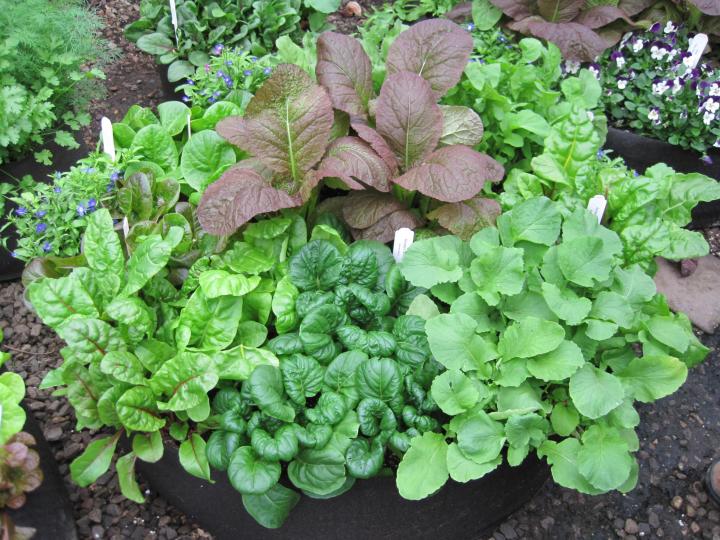
If you are lacking garden space, try growing salad greens in containers.
Depending on your taste buds, you can grow mild, tender greens like claytonia, chard, and mache, or bitter greens like endive, escarole, and radicchio. If you want to add a peppery tang to your salads, try mustard, mizuna, broadleaf cress, or arugula.
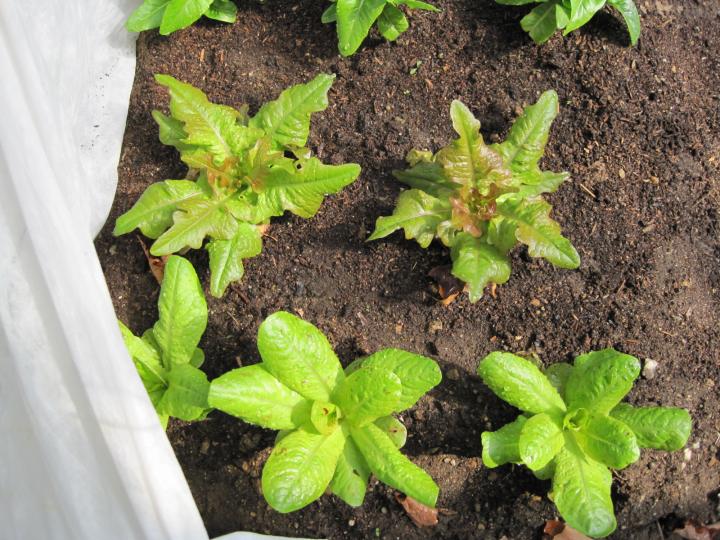
Lettuce is the obvious choice for a salad garden and there are many spring lettuces to choose from. Try a delicate butterhead, tasty heirloom crisphead, or colorful leaf lettuce. Plant them as soon as the ground can be worked. Lettuce seeds will germinate in soil as cold as 40°F (5°C).
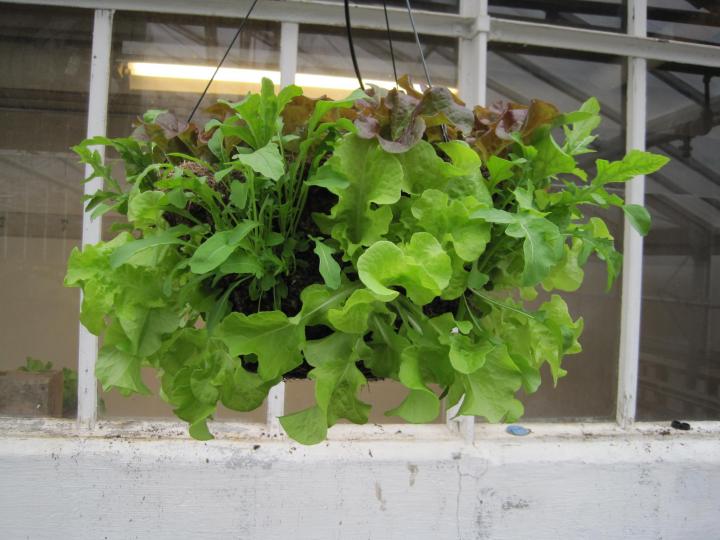
Lettuce even grows great in a hanging basket!
"Cut-and-Come-Again" Greens
There are ready-made salad mixes that offer a wide variety of textures, colors, and flavors. Look for mesclun or misticanza mixes, or make up your own custom blend using seeds for your family's favorite greens. Lettuces and greens that will continue to grow after being given a haircut are called "cut-and-come-again" in many catalogs.
Growing and Harvesting Salad Greens
The key to having perfect greens is to grow them under row covers, which help to keep them relatively clean and bug-free.
Many row covers are made from spun-bonded polypropylene, a material that is light-, water-, and air-permeable, and very lightweight. Most allow 70%-90% light transmission. Covers help to moderate temperature and give a few degrees of frost protection, too. They can be supported by wire hoops or just laid over the plants and held in place with rocks and soil. Unlike plastic, this breathable material won't cook your plants on a hot sunny day.
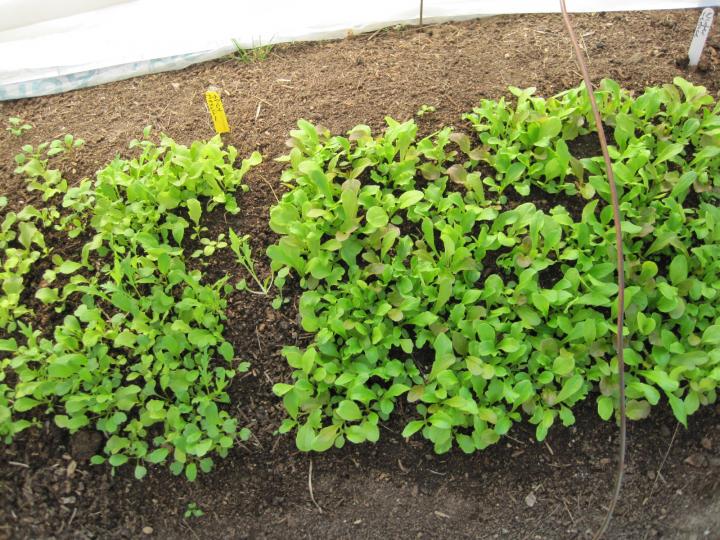
One simple way to grow your cut-and-come-again greens is to rake the prepared seedbed smooth and broadcast the seed evenly or sow it in wide bands to make harvesting easier.
To keep a continuous supply of greens, plant a small section of the bed every two weeks. Cover the seeds lightly with soil and tamp down. Keeping the seedbed moist while the seeds are germinating is important and the row covers will help to keep moisture in. Greens are mostly water and will suffer a setback if allowed to wilt. When the plants emerge, keep the row covers in place and well-anchored on all sides. Only remove them when harvesting. This is a very effective way to foil flea beetles, the bane of the early spring garden. Tiny, black hopping specks no more than 2mm long, they will leave your lettuce riddled with small holes.
To pick your greens, carefully shear the young plants with scissors, leaving the growing center of the plant intact. Water and lightly fertilize the plants, cover them up with the row cover, and in no time at all, they will regrow and be ready for another harvest.
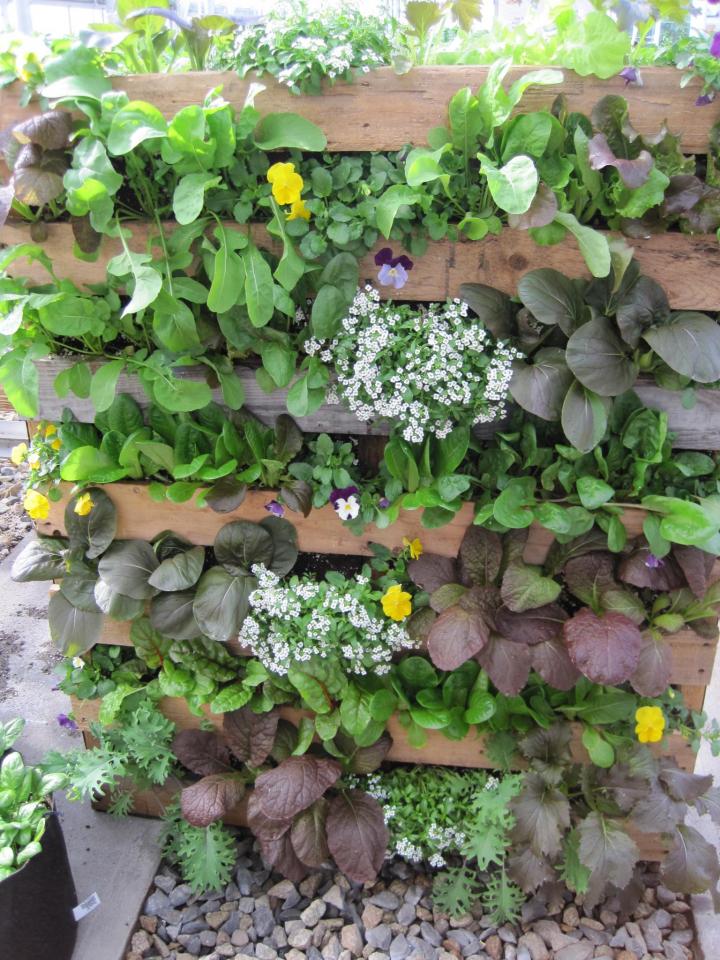
If you don't have a lot of room, try growing salad greens in a pallet garden (pictured above). Wrap landscape fabric around the back and sides of a wooden pallet, then fill the openings with soil and plant your seeds or starter plants. When the plants have taken root and begun to grow, simply stand the pallet upright in a sunny location.
Turn just a small part of your backyard into a salad-lover's dream garden and soon you'll be harvesting a bounty of flavorful greens.
Learn More















